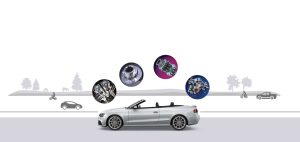A venomous snake bite is rarely fatal — only about six people die each year — but it should still be treated as a medical emergency. Even a seemingly harmless snake bite can be dangerous, causing an allergic reaction or infection. Cleaning the cut, staying calm, and immobilizing the affected area are some of the first aid measures you should take in a clinic after a snake bite. It is, however, important to get to a medical center as soon as possible for emergency care. Dr. Mukesh Mahajan explains the steps to be taken if sanke bites. He is one of the best General Physician in Pune.
Top 5 things you need to do if you get bitten by a snake
If you’re afraid of snakes or believe that if you don’t bother them, they won’t bother you, it’s important to know what to do if you get bitten by one if you live in Queensland. Snakes normally bite defensively rather than attacking humans, and in Queensland, being bitten at home is just as normal as being bitten in the bush or other wild areas. Having these tips in mind if you’re ever bitten by a snake could save your life.
- Call an ambulance right away
Regardless of whether the snake was venomous or not, any snake bite should be treated as an emergency. Many snakes have similar appearances, and if you wait to see if you show signs of venom poisoning, it might be too late.
You must remain as still as possible, so instead of scrambling for a phone, use a cell phone or have someone else call for assistance. Call Triple Zero (000) to order an ambulance, or use the Emergency+ app to do so. This software utilizes the GPS capabilities of cell phones to assist emergency responders in determining your exact location.
- Don’t be alarmed, and don’t move
Staying calm and still after a snake bite will help slow the spread of venom in your body, which is easier said than done. If you’ve been bitten by a poisonous snake, staying still may be the best thing you can do. It’s a myth that snake venom enters the bloodstream immediately after a bite. It travels through your lymphatic system instead. Lymph is a fluid that condenses in your body.Lymph is a fluid that includes white blood cells in your body. Unlike blood, which is constantly pumped throughout your body, lymph travels as you move your limbs. You will keep the venom in your lymph from spreading deeper through your body if you can remain still and relax.
If you’re certain the snake has moved on after biting you and you’re not in danger of being bitten again, stay put instead of walking for help. If you’re with someone, they shouldn’t pass you at all; instead, they should begin administering first aid right where you are. To help you relax, take a few long, deep breaths. Keep in mind that the odds are on your side: people rarely die after being bitten by a snake, particularly if they follow basic first-aid procedures.
- Do not approach the snake
Do not attempt to spot, trap, hurt, or kill the snake; you will most likely come up short. Staff at the hospital have access to a variety of tests that will help them identify the type of snake you were bitten by, allowing them to provide you with the best care possible.
- Splint and apply a pressure immobilization bandage
The majority of snake bites occur on a limb, so the legs, feet, arms, and hands are the most frequently bitten places. Applying a pressure immobilization bandage to a bitten limb will avoid the venom from spreading into your lymphatic system.
Put a pad or a piece of plastic, such as cling wrap, over the bite site to either soak up or cover the venom for later testing. Follow the steps below to apply a pressure immobilization bandage:
- Using a 10- to 15-cm-wide elasticized roller bandage.
- Apply a bandage to the bite spot.
- Apply a second elasticised roller bandage to the bitten leg, beginning just above the fingers or toes and continuing upwards as far as the bandage would allow.
- Apply the bandage to the limb as securely as possible.
- If a bandage isn’t available, any stretchy material will suffice (torn up t-shirts, stockings or other fabric can be used as a bandage).
Mark the bite site on the bandage with a marker or other material that will leave a mark – if you don’t have anything else on you, a little mud or dirt on the bandage will suffice. Then, to hold the arm still, splint it. Any straight item, such as a rock, rolled up newspaper, or tightly rolled up clothes or tarps, will suffice. Securing the splint to the limb with bandages or other material is the safest way to hold it in place. You don’t need to wear a pressure immobilization bandage if you’ve been bitten on the head, neck, or torso.
- Avoid washing, sucking, cutting, or tourniqueting the scratch
There are a variety of old snake bite treatment approaches that are now considered to do more harm than good. Washing the bite site will extract venom, which the hospital staff will use to assess the type of snake that bit you. Clothing should also be removed from the bite site because additional movement will allow venom to enter the bloodstream more easily. Sucking or cutting the bite area is not recommended. Applying a tourniquet to the limb is not recommended because it can be risky.






More Stories
Rapid Mental Health Insights With AI-Powered Paper Summaries
4 Key Steps to Summarizing Animal Health Blogs for Easy Consumption
“PicoLaser: Revolutionizing Skincare with the Power of Picoseconds”